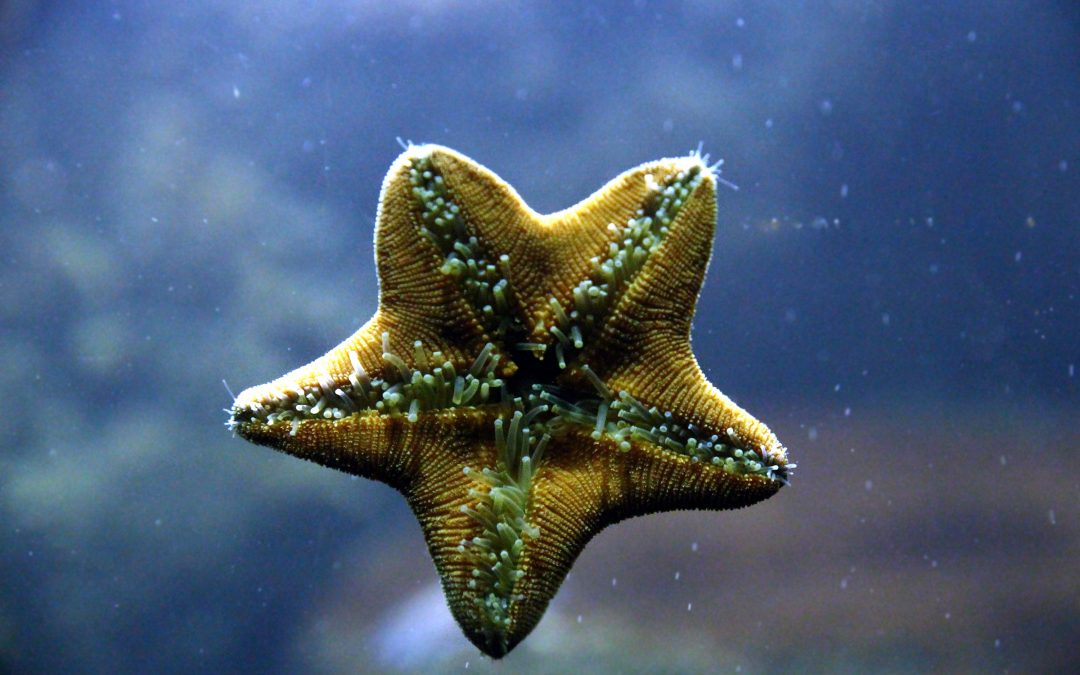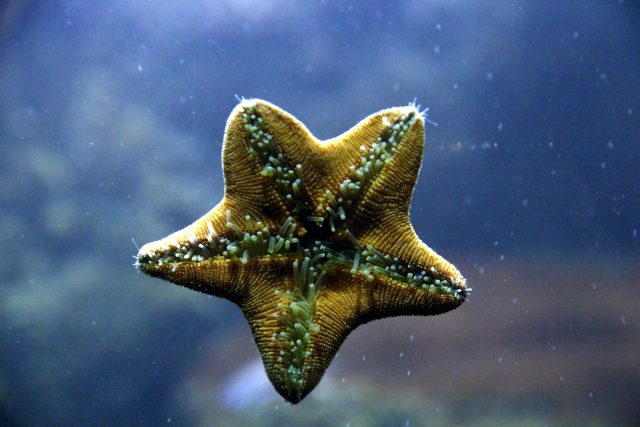Stars” of the Aquarium
You’ve selected your fish, your plants are in place, and the water is the perfect temperature. You’re just looking for that perfect finishing touch for your saltwater aquarium. Why not add a few starfish? These interesting creatures are found in all oceans, and though a few are found in deep water, most are encountered in inter-tidal areas. They’re fairly easy to own and can happily co-exist with many other sea creatures, making them the ideal addition to many saltwater tanks.
For fish fans with reef aquariums containing live sand, brittle and serpent starfish may be desirable options. These types of starfish continuously stir the sand bed, thus providing oxygen for beneficial bacteria which live in it.
Starfish – or sea stars, as they’re sometimes called — live on the floor of the ocean, or in this case, the floor of your saltwater aquarium. They get along well with most other saltwater creatures, with the exception of certain shellfish. Starfish are not actually fish; they are echinoderms, a term which references their hard outer skeletons. They are also predators that will feed on some shelled creatures. While they are too slow to be much of a threat to the typical fish, and their spiny exteriors makes some other aquatic creatures avoid them, starfish can use their feet to pry open the shells of clams, oysters and mussels and feast away. They are also scavengers, so in order to keep them happy in your aquarium, you will need to provide bits of food that will sink to the bottom of the tank.
Because the mouths of starfish are located underneath, in the center area, it can be tough to tell if they are actually getting enough to eat. But, if you notice them beginning to fade in color, or if their spiny exoskeletons begin to go soft, poor nutrition may be the cause. If more food doesn’t help your starfish improve, double-check the lighting conditions and water quality in your aquarium.
Starfish probably won’t spawn in an aquarium. In fact, most prefer to live on their own, but they may reproduce asexually. They can regenerate a damaged arm, and in some cases, the fragmented arm can become an entirely new starfish!
Though starfish aren’t very choosy about the conditions in their aquariums and will stay near the bottom most of the time, you may catch them using the suckers on the bottoms of their arms to climb up the walls. They will also enjoy having rocks to climb on, but be sure they stay well away from the heating element. Occasionally, they get too close and can burn themselves.

While your starfish are being placed in and getting used to their new home, it is vital to keep them underwater.
There are many varieties of starfish from which to choose, from the brittle and serpent sea stars mentioned above to the blue starfish, chocolate chip sea star or marble starfish. If you’re intrigued by these creatures, do a little investigating and find out which type is right for your saltwater aquarium.


